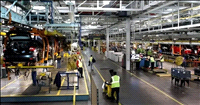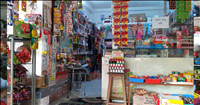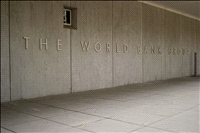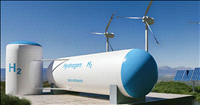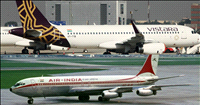Technology and Living
By Now, let me turn to the second facet of | 15 May 2001
Now, let me turn to the second facet of technology and living.
Digital Overlay
While life per se will be dramatically impacted by biotechnology, living will be drastically impacted by information and communications technologies.
These technologies will impact:
1. the way we live, 2. the way we transact, and 3. the way we relate to the world around us in space, time and size.
Satellite, Internet, broadband and wireless based information and communications technologies - are ushering in fundamental changes in social and economic life. Digital networks and miniaturised devices are changing our perception of time, distance and space. They help us connect and communicate with our work, home and interests, while on the move. They hold promise for disseminating knowledge at low cost.
We now have the ability to work, shop, educate and entertain ourselves round the clock, both in the virtual world and in the physical world. Very soon we will be able to feel and smell, as well, through the virtual world. We no longer need audio tapes and CDs to listen to music. Video tapes and DVDs are not necessary to see movies. Books and CD ROMs are not needed to get educated. Newspapers and magazines are not required to keep abreast of events. Vehicles and wallets soon will become unnecessary for shopping. We will not necessarily need physical space in shops, banks, movie theatres, classrooms and libraries.
Mobile phones are changing our notion of space by enabling us to call a person and not a location. Emails are changing our notion of time by enabling us to write a conversation. Virtual chat groups are redefining social organisation. In fact, email is not just for business anymore. Email is increasingly being used as a social and, yes, even a romantic tool as well as an academic one. Young people argue that if used properly, email can actually help rather than destroy a relationship of any kind.
But that is not all. New simulated virtual worlds with exhilarating experiences will emerge behind the screens of our computers and televisions, thanks to convergence of media and wide band networks.
What would be the fallout of these radical developments?
Human Ability
To my mind, the first fallout would be in substantially enhancing human ability.
Just as the age of the machines amplified the reach of the human muscle, the age of the microchip amplifies the reach of the human brain. Being connected to an ‘every time, every place, every device’ network dramatically amplifies human ability – from simple tasks like driving to an unknown destination using GPS systems to complicated routines like remote telesurgery. Networking of devices with smart software can also relieve human effort by helping devices report problems and call for repairs on their own.
Today there are about 100 million machines interconnected. This is just under 2% of the world population. Imagine the power of this network if 6,000 million or more machines are interconnected on the globe.
On the negative side, living in privacy will be virtually impossible. Miniaturised Web cameras and microphones can observe people clandestinely and data mining can reveal habits and tendencies. Technology will make it easy for government and companies to track down and monitor every detail of our personal and financial lives. It is much like being under watch all the time.
Redesign
This digital overlay will also lead to redesign of places where we live and work. The advent of the television led to individual objects at home – chairs, sofas, dining table and beds – being physically oriented to the television. With miniaturised devices and wireless networks, devices in the room will be electronically oriented to one another with the ability to coordinate and talk to each other.
Public places would also be subject to redesign. This is not new. Consider the emergence of the automobile. In automobile intensive societies, you will see designs adapted to the use of cars – from freeways to ferries and drive-in banks to drive-in fast food outlets. Likewise, the digital outlay will call for new landscapes – from simple sensors on roads to regulate traffic to networks that track the movement of every person.
Information and communication technologies will thus change our concept of time, space and size. They will lead to enhanced human ability, redesigned private and public places and shrunken devices.
Technology and Living Systems
This brings me to the impact of technology on living systems. This can be seen by looking at the impact of technology on three forms of living systems:
1. Society 2. Nation State 3. Mankind
Society
I must emphasise that future technologies are not only all about biotechnology, information technology and communication technology. It would encompass improvements in and innovations of existing technologies. In agriculture, we will see precision farming techniques. In industry we will see micro-mechanical devices. In transportation, we will see hybrid vehicles, running on electricity and gas. In energy, we will see alternative hydrogen fuel cells. In homes, we will see robots.
Society will not only witness the emergence of new technologies but will also see existing technologies being continuously improved, based on new technologies, in a virtuous cycle. Life sciences, information and communication technologies will make existing systems efficient and productive.
Future civil societies will also see new relationships between man and machine brought about by technology. The digital overlay that I talked about will make us so much part of an electronically networked world. It would be unimaginable for us to live away from networked gadgets, appliances and machines, either at home or at the work place.
The Internet by itself will be akin to a living system. With the Internet, everyone on the planet has the potential to be virtually closer than ever before.
The Internet would penetrate every aspect of daily life around the globe, affecting everything from national security to personal privacy, from economic competitiveness to democratic participation in governance. Already millions of technologically empowered individuals are now able to participate freely in international transactions and enterprises, social and economic. The Internet has become a self-governing community controlled by no one and needing no supervision. It is remarkably decentralized and uninstitutionalised. As it grows in scope, bandwidth, and functionality, the Internet will acquire greater power and presence. Today the Internet handles 50 billion dollars of transactions. In about thirty years, this flow will amount to 4 trillion dollars, or a seventh of the world economy.
Increasing dependence on gadgets, appliances and machines will force the pace for a new relationship between man and machine. The concepts of wearable computers and humanised robots would be translated into applications in households and work places.
Nation State
I strongly feel that we are still too far from appreciating the tumultuous impact of technology on the nation state.
Traditionally, people have had sworn by sovereign alliance to his or her territorial nation state. This was understandable as resources, such as agriculture, land and minerals, were territory based.
However, information and communication technologies are re-defining the concept of nation states. Knowledge, instant communication and mobility in the twenty first century could give rise to new political models. The European Union is an example of such a political model in its embryonic form.
Mankind
Technology is changing the nature of human concerns. New controversies and conflicts are beginning to surface. For example, a big battle is already being waged in the United States about genetically engineered foods.
A furious debate is raging if such foods could be toxic, could cause allergic responses, could have lower nutrition value and could compromise immune responses in consumers.
Technology is also taking mankind to a completely new ecosystem – beyond the biosphere into space. We are beginning to see the emergence of an era of cosmic commerce. Very soon mankind will see the widespread use of satellites and space stations for communications, Internet services, remote telemedicine, observation, physical mapping, science research, meteorology, navigation, space exploration and adventure travel to space. Seven day civilian space flights could be a reality very soon.
Information and communication technologies permit the accumulation, analysis, and manipulation of data on an unprecedented scale. The potential for mass surveillance, tracking, and profiling is enormous. So too is the potential for filtering material for quality, suitability, and utility. Tools for managing content are being developed and will be widely deployed. These tools must balance freedom of speech and privacy against a desire for protection against hate speech and other objectionable material. All these issues will set a new agenda for individuals, society and the nation, states.
It will be necessary to examine what barriers must be overcome to achieve the promise of electronic commerce. How can transactional and systemic failures be avoided? How can public confidence in doing business on the Net be strengthened? What overseeing is needed to assure the security and privacy of electronic transactions? Can industry self-regulation suffice or must laws be adopted?
In essence, technology will change the very face of mankind.












